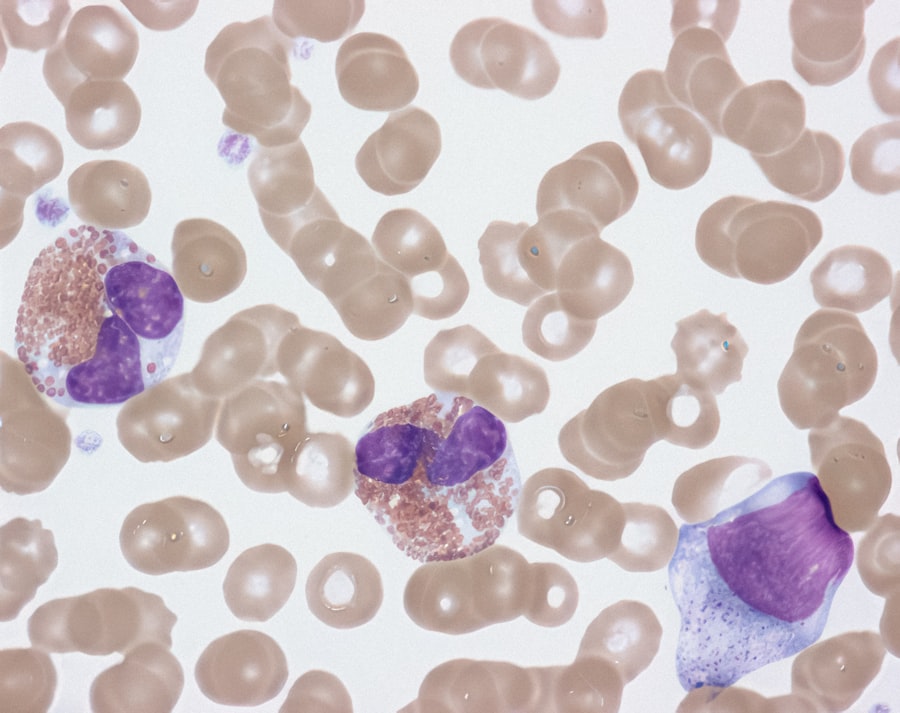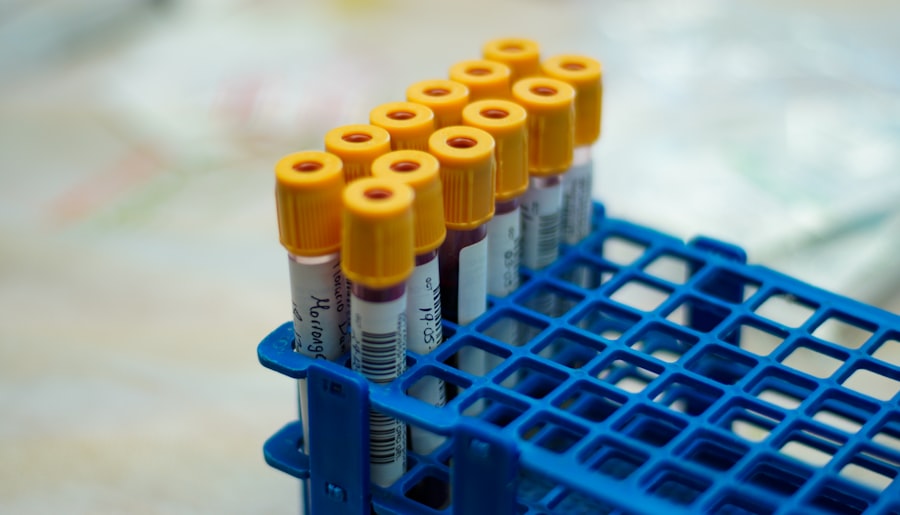Hemochromatosis is a genetic disorder characterized by excessive iron accumulation in the body. This condition can lead to serious health complications if left untreated, as the body absorbs more iron than it needs, resulting in toxic levels that can damage organs. The most common form of hemochromatosis is hereditary, meaning it is passed down through families.
Individuals with this condition often have mutations in the HFE gene, which plays a crucial role in regulating iron absorption. Understanding hemochromatosis is essential for recognizing its potential impact on your health. The excess iron can deposit in various organs, including the liver, heart, and pancreas, leading to conditions such as liver cirrhosis, diabetes, and heart disease.
While the disorder is more prevalent among individuals of Northern European descent, it can affect anyone. Awareness of this condition can empower you to take proactive steps toward managing your health.
Key Takeaways
- Hemochromatosis is a genetic disorder that causes the body to absorb too much iron from the diet, leading to iron overload.
- Symptoms of hemochromatosis can include fatigue, joint pain, abdominal pain, and bronze skin discoloration, and the condition can increase the risk of liver disease, diabetes, and heart problems.
- Early detection of hemochromatosis is crucial for preventing serious complications, as the condition can be managed effectively with early intervention.
- Screening options for hemochromatosis include blood tests to measure iron levels and genetic testing to identify the specific gene mutations associated with the condition.
- DIY hemochromatosis tests can be convenient and cost-effective, but they may not provide accurate results and should be followed up with professional medical advice and testing.
Symptoms and Risks of Hemochromatosis
The symptoms of hemochromatosis can be subtle and may develop gradually over time, making it challenging to diagnose in its early stages. Common symptoms include fatigue, joint pain, abdominal pain, and changes in skin color, often described as a bronze or gray hue. As the condition progresses, you may experience more severe complications such as liver dysfunction, diabetes, and heart problems.
Recognizing these symptoms early can be crucial for effective management. The risks associated with untreated hemochromatosis are significant. Chronic iron overload can lead to serious health issues, including liver cirrhosis, which can be life-threatening.
Additionally, the risk of developing diabetes increases due to pancreatic damage from excess iron. Heart complications, such as cardiomyopathy and arrhythmias, are also common among those with advanced hemochromatosis. Understanding these risks can motivate you to seek medical advice if you suspect you may have this condition.
Importance of Early Detection

Early detection of hemochromatosis is vital for preventing severe complications and improving your overall health outcomes. When diagnosed early, treatment options such as phlebotomy (regular blood removal) can effectively reduce iron levels in your body and prevent damage to vital organs. The earlier you begin treatment, the better your chances of avoiding long-term health issues associated with iron overload.
Moreover, early detection allows for lifestyle modifications that can further support your health. By understanding your condition sooner rather than later, you can make informed decisions about your diet and lifestyle choices that may help manage iron levels. This proactive approach not only enhances your quality of life but also reduces the risk of developing serious complications down the line.
Hemochromatosis Screening Options
| Screening Option | Accuracy | Cost | Availability |
|---|---|---|---|
| Genetic Testing | High | High | Specialized clinics |
| Serum Ferritin Test | Moderate | Low | Most healthcare facilities |
| Transferrin Saturation Test | Moderate | Low | Most healthcare facilities |
Screening for hemochromatosis typically involves a combination of blood tests and genetic testing. The initial blood tests measure serum ferritin and transferrin saturation levels, which indicate how much iron is stored in your body and how well it is being transported. If these tests suggest iron overload, further genetic testing may be recommended to confirm a diagnosis of hereditary hemochromatosis.
In addition to blood tests, healthcare providers may also recommend liver function tests or imaging studies to assess any potential damage caused by excess iron. These screening options are essential for determining the extent of iron overload and guiding appropriate treatment strategies. Being aware of these screening methods can help you take charge of your health and ensure that you receive timely care.
DIY Hemochromatosis Test: Pros and Cons
The idea of conducting a DIY hemochromatosis test at home may seem appealing due to its convenience and potential cost savings. However, there are both pros and cons to consider before embarking on this path. On the positive side, a DIY test can provide you with preliminary insights into your iron levels without the need for a doctor’s visit.
This can be particularly beneficial for those who may have difficulty accessing healthcare services or who want to monitor their health more closely. On the other hand, DIY tests often lack the accuracy and reliability of professional medical assessments. Home testing kits may not provide comprehensive information about your iron status or potential complications associated with hemochromatosis.
Additionally, interpreting the results without professional guidance can lead to misunderstandings or unnecessary anxiety. Weighing these pros and cons is essential before deciding whether a DIY test is right for you.
Home Screening Methods for Hemochromatosis

If you’re considering home screening methods for hemochromatosis, there are several options available that can help you gauge your iron levels. One common method involves using at-home blood test kits that measure ferritin and transferrin saturation levels. These kits typically require a small blood sample obtained through a finger prick, which you then send to a laboratory for analysis.
Keeping a journal of any changes in your health or new symptoms can provide valuable information when discussing your concerns with a healthcare provider. While these home screening methods can offer insights into your health status, they should not replace professional medical advice or testing.
How to Perform a DIY Hemochromatosis Test at Home
Performing a DIY hemochromatosis test at home typically involves using an at-home blood test kit designed for measuring iron levels. To begin, you’ll need to follow the instructions provided with the kit carefully. This usually includes cleaning the area where you’ll obtain the blood sample and using a lancet to prick your finger gently.
After preparing the sample, you’ll send it to the designated laboratory for analysis. It’s essential to keep track of when you send the sample and when you expect to receive results so that you can follow up promptly.
Understanding the Results of a DIY Hemochromatosis Test
Interpreting the results of a DIY hemochromatosis test requires careful consideration of the values provided by the laboratory. Typically, you’ll receive information on your serum ferritin levels and transferrin saturation percentage. Elevated ferritin levels may indicate excess iron storage in your body, while high transferrin saturation suggests that your body is absorbing too much iron.
However, it’s crucial to remember that these results should be viewed as preliminary indicators rather than definitive diagnoses. If your results suggest potential iron overload, it’s essential to consult with a healthcare professional for further evaluation and guidance on next steps. Understanding how to interpret these results can empower you to take action regarding your health.
When to Seek Professional Medical Advice
If you suspect that you may have hemochromatosis or if your DIY test results indicate elevated iron levels, seeking professional medical advice is crucial. A healthcare provider can conduct comprehensive testing to confirm a diagnosis and assess any potential damage caused by excess iron in your body. Early intervention is key in managing this condition effectively.
Additionally, if you’re experiencing symptoms such as persistent fatigue, joint pain, or changes in skin color, it’s essential to consult with a healthcare professional promptly. These symptoms could indicate underlying health issues that require attention beyond what a DIY test can provide. Being proactive about your health ensures that you receive appropriate care tailored to your needs.
Lifestyle Changes for Managing Hemochromatosis
Managing hemochromatosis often involves making significant lifestyle changes aimed at reducing iron levels in your body. One of the most effective strategies is regular phlebotomy sessions, where blood is drawn to decrease iron stores. However, dietary modifications also play a crucial role in managing this condition.
You may want to limit your intake of iron-rich foods such as red meat and fortified cereals while increasing your consumption of foods high in calcium and fiber, which can help inhibit iron absorption. Additionally, avoiding vitamin C supplements during meals can prevent increased iron absorption from plant-based sources. Making these dietary adjustments can significantly impact your overall health and help manage hemochromatosis effectively.
Resources for Further Information and Support
If you’re looking for more information about hemochromatosis or seeking support from others who understand what you’re going through, numerous resources are available. Organizations such as the Hemochromatosis Society provide valuable information on managing this condition and connecting with others facing similar challenges. Online forums and support groups can also offer a sense of community and shared experiences among individuals living with hemochromatosis.
Engaging with these resources can empower you with knowledge and support as you navigate your journey toward better health management. Remember that you’re not alone in this; many people are willing to share their experiences and insights to help you along the way.
If you’re interested in learning how to test for hemochromatosis at home, you might find it helpful to explore related resources that provide comprehensive insights into managing health conditions. One such resource is an article available on Explore Senior Health, which offers valuable information on various health topics pertinent to seniors. You can read more about maintaining optimal health and potentially related conditions by visiting their website. For further details, check out this
